Driving in Europe: everything you should know
11 June, 2025
Driving in Europe can be daunting if you’ve never done it before, from required items and documents to the latest laws and regulations. With these handy tips and answers to frequently asked questions, you’ll be well prepared to tackle those European roads!
-
- Driving in Europe for the first time
- Is a UK driving licence valid in Europe?
- Hiring a car in Eruope with a UK driving licence
- What is a vignette for driving in Europe?
- UK car sticker for France
- Do I need to adjust my headlights for driving in Europe?
- What is the law for the “Angles morts” sticker?
- In case of accidents or emergencies
- European driving: checklist and requirements
Driving in Europe for the first time
Driving in Europe is fairly straightforward once you get the hang of it. You probably already know the general rules. Let dive into some specifics.
Drive on the right, give way to the left
First things first, and as you probably well know, most Europeans drive on the right, unless you’re in Malta, Ireland, or Cyprus. This means you’ll have to give way to vehicles on your left, and drive roundabouts anti-clockwise, instead of clockwise. In some countries, like the Netherlands, you will also have to look out for bikes and bike lanes. Do pay special attention on motorways, as the slow and fast lanes are reversed compared to the UK.
Some people find a sticker on their steering wheel or dashboard helpful. Also keep in mind that, when overtaking (on the left!) in a right-hand drive car, your visibility of the road will be limited. Just take a moment, and drive mindfully. Adjust your mirrors if necessary.
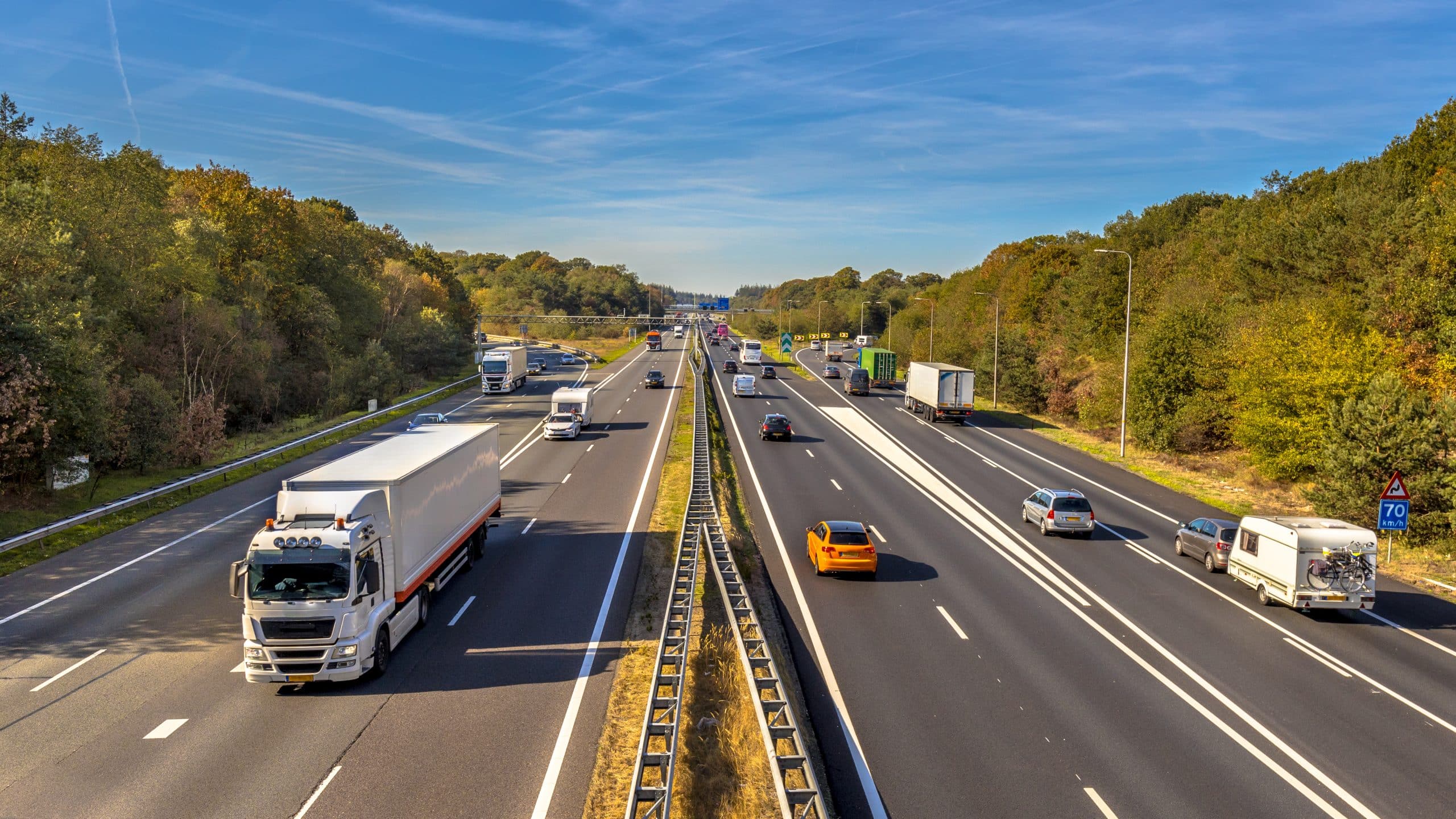
Driving on the right side of the road might be counterintuitive at first, but you’ll get the hang of it!
Toll roads
Toll roads are quite common in Europe, especially on motorways. You can either pull up to the automatic toll booths on these roads – many no longer accept cash – or purchase a toll badge online. This small device can be placed on your window, close to your rear view mirror. In other cases, you’ll need a vignette. It’s wise to check the rules that apply to the country or countries you will be visiting.
Keep in mind that these roads are avoidable, but that this might mean that you will be travelling on smaller roads. This might increase your driving time, but often also takes you through places you would not have seen, if you had opted for the toll roads.
European tunnels
European road tunnels are quite long compared to those in the UK. For example, the longest one in Europe is a 15 miles long tunnel in Norway. The longest in the UK, the Queensway near Liverpool, is a mere 2.13 miles. These dark tunnels can feel a bit unsettling when you’re not used to them. Just remember to turn your lights on, take your sunglasses off, and keep your distance.
Speed limits
Keep in mind that most speed limits are indicated in kilometres per hour, not miles per hour. As a quick reminder, 10 mph is approximately 16 km/h. The limits also vary, depending on what country you’re in. Make sure to check local limits and keep an eye out for signs.
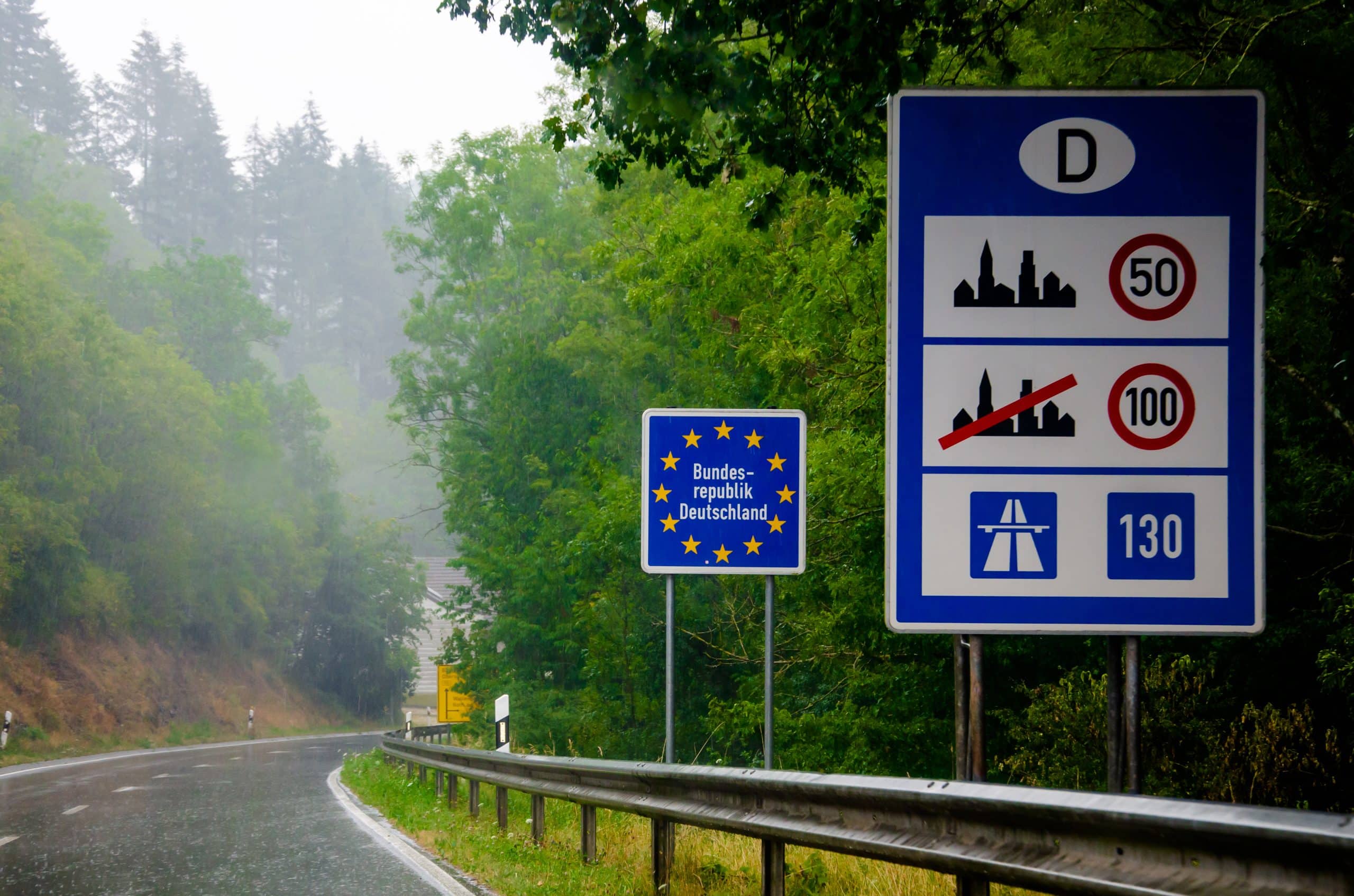
Pay attention to these signs when entering a country. They tell you important information about the speed limits.
Is a UK driving licence valid in Europe?
Yes, you can legally drive in European countries with your UK driving licence. You might need an additional international driving permit (IDP) if you have a paper driving licence, or a licence that was issued in Gibraltar, Guernsey or the Isle of Man. In this case, I would advise you to check the rules with the relevant embassy. An IDP costs £5.50.
Hiring a car in Europe with a UK driving licence
It’s no problem to hire a car in Europe with a UK driving licence. Upon renting, you must be at least 18 years old, and your driving licence must be valid for at least the entire duration of your stay. Keep all rental documentation at hand during your trip, as these include all insurance details.
What is a vignette for driving in Europe?
A vignette is basically a sticker that indicates that you have paid the taxes and fees to legally make use of the toll roads. Other vignettes indicate your vehicle’s emissions. Either must be placed on your windshield, whether you’re driving your own personal vehicle or a rental – in which case, you will need to let the rental company know that you’re planning on taking the vehicle across the border.
The vignettes differ per country, so it’s possible that you need multiple for your trip. Don’t worry, because the vignettes are available at any border crossing and are quite affordable. Countries that require a vignette for toll roads are Austria, Bulgaria, Czech Republic, Hungary, Romania, Slovakia, Slovenia, Switzerland and Turkey. In Germany, France (Paris, Lyon and Grenoble, among other regions) , Spain (Barcelona and Madrid) and Switzerland (Geneva), you’ll need an emissions vignette.
Some countries also accept e-vignettes (electronic vignettes), which you can purchase online. The vignettes are valid for a certain period of time – up to one year – so pay attention to that when purchasing. All are available online. Do be aware that the ordering process of a vignette can take up to six weeks, so make sure you plan accordingly.
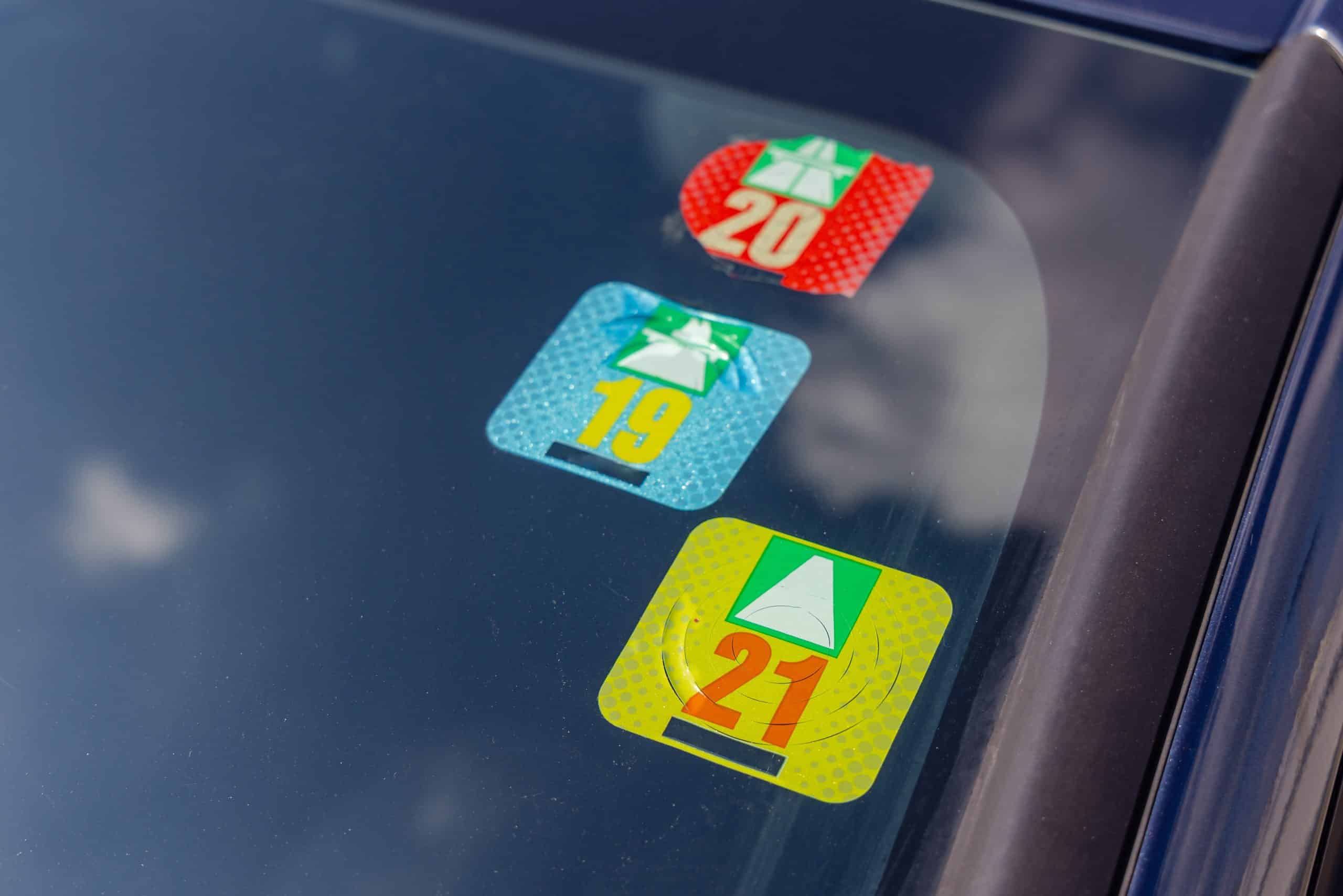
Make sure you have the right vignettes for the countries that you’re visiting, and to put them in the right place.
UK car sticker for France
When driving your (UK-registered) vehicle in Europe, it will need the UK identifier. There are a few rules to this. If your number plate already has an UK-identifier which includes the Union Jack, you are good to go. Unless you’re in Spain, Cyprus or Malta. Here, you’ll need the sticker no matter what.
In any other European country, if your number plate has a GB identifier with the Union flag, a Euro symbol, a national flag of England, Scotland or Wales or has numbers and letters only – without a flag or identifier – you do need the sticker.
Do I need to adjust my headlights for driving in Europe?
In Europe, it’s illegal to dazzle oncoming traffic. As your headlights are fitted to drive on the left-hand side of the road, it’s important to either adjust them for driving on the right side, or to get some headlamp converters. These widely available stickers can easily be placed onto your headlights.
It’s even simpler if you own a modern car with LED lights. Most of the time, you can adjust the beams via the car’s settings menu. Just check your car’s instruction manual to be sure.
What is the law for the “Angles morts” sticker?
Have you ever spotted the “Angles morts” stickers on large vehicles? You might think that these are meant only for lorries or busses, but they might also apply to your vehicle.
As of 1 January , 2021, all vehicles weighing 3.5 tons or over are legally required to display “Angles morts” stickers in France. This is to warn fellow road users about your potential blind spots. “Angles morts” basically means “blind spots” in French. Even when using side mirrors, these spots remain invisible for the driver. This rule applies to all vehicles using French road, regardless of their country of registration.
And yes, you still need them even if your vehicle has cameras fitted. You’ll need three stickers: one on each side, within one metre of the front of your vehicle, and one of the right side of the rear. Make sure you place them in the correct spots. If your vehicle does not have these stickers, you can be fined up to €750. You can purchase them online or in petrol stations in France.
In case of accidents or emergencies
Call 112 in case of an emergency. It is the European phone number for the police, ambulance services and the fire brigade.
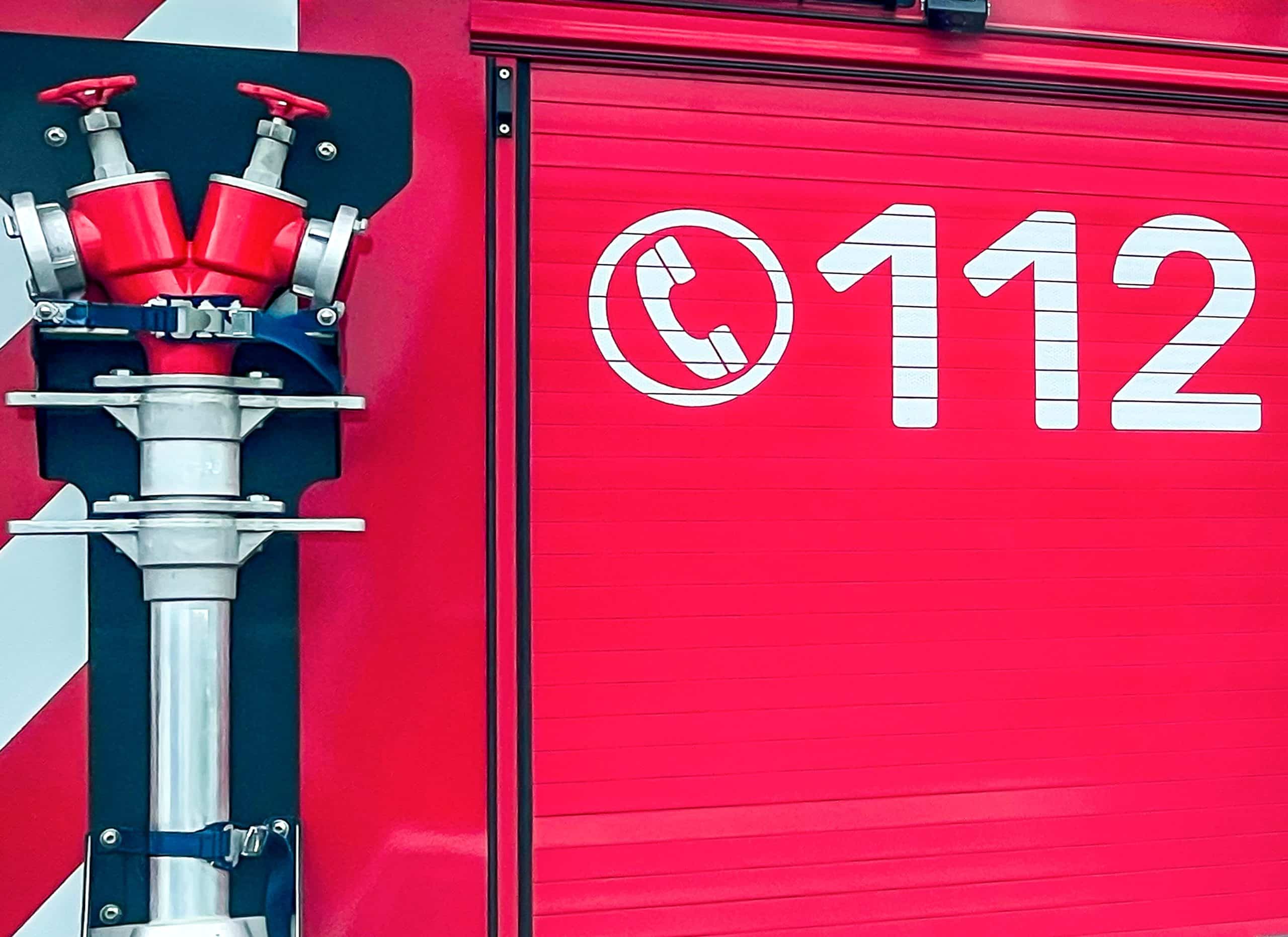
The emergency number for the police, ambulance and firedepartments is 112 throughout Europe.
European driving: checklists and requirements
Driving on the Continent can feel quite overwhelming if you don’t know what you can expect. I’ve listed important documents, required items and other (country-specific) tips, so you can get on the road well prepared.
Don’t forget these important documents when driving to and in Europe
- Valid driving licence and national insurance number
- Proof of vehicle insurance
- Proof of ID (passport)
- V5C certificate – if you are taking your own car
- Travel insurance documents
- European Breakdown Cover policy number and documents
- Valid and up-to-date vehicle’s tax and MOT
- Crit’Air sticker – if you’re travelling in France
These items are required
- Reflective jackets
Make sure you have a high-visibility reflective jacket for your entire travel party in the glove compartment of your vehicle. - Warning triangle
These are compulsory in most European countries. In Spain, you’re obliged to have two. - First aid kit
You’re legally required to carry a first aid kit in your car in many European countries. - UK stickers
In Spain, Cyprus and Malta, your car needs to display a UK sticker at all times, if it is UK-registered. Unless your number plate contains a Union flag, you also need this sticker in other European countries. Unfortunately, a Euro symbol, GB identifier or a national flag does not count as UK identification. - Vignettes and emissions stickers
Some countries require certain (e-)vignettes or emissions stickers. Check out our paragraph on them. - Headlight converter
Are you driving a UK car? Chances are that you will need headlight converter stickers to adjust your lights. - Snow chains and winter tyres
Are you going on a trip to Europe during the winter? Snow chains and/or winter tyres are legally required in Austria, Germany, Switzerland, Italy and Andorra. - Spare pair of glasses
In some European countries, such as France and Spain, you are required to carry a spare pair of prescription glasses in the car – if you normally wear them.
These items are not required, but they might be useful when you’re travelling: a fire extinguisher, spare batteries, replacement bulbs, a spare fuel can, a torch, engine oil and water, copies of essential documents, some spare euros, and a European Health Insurance Card.
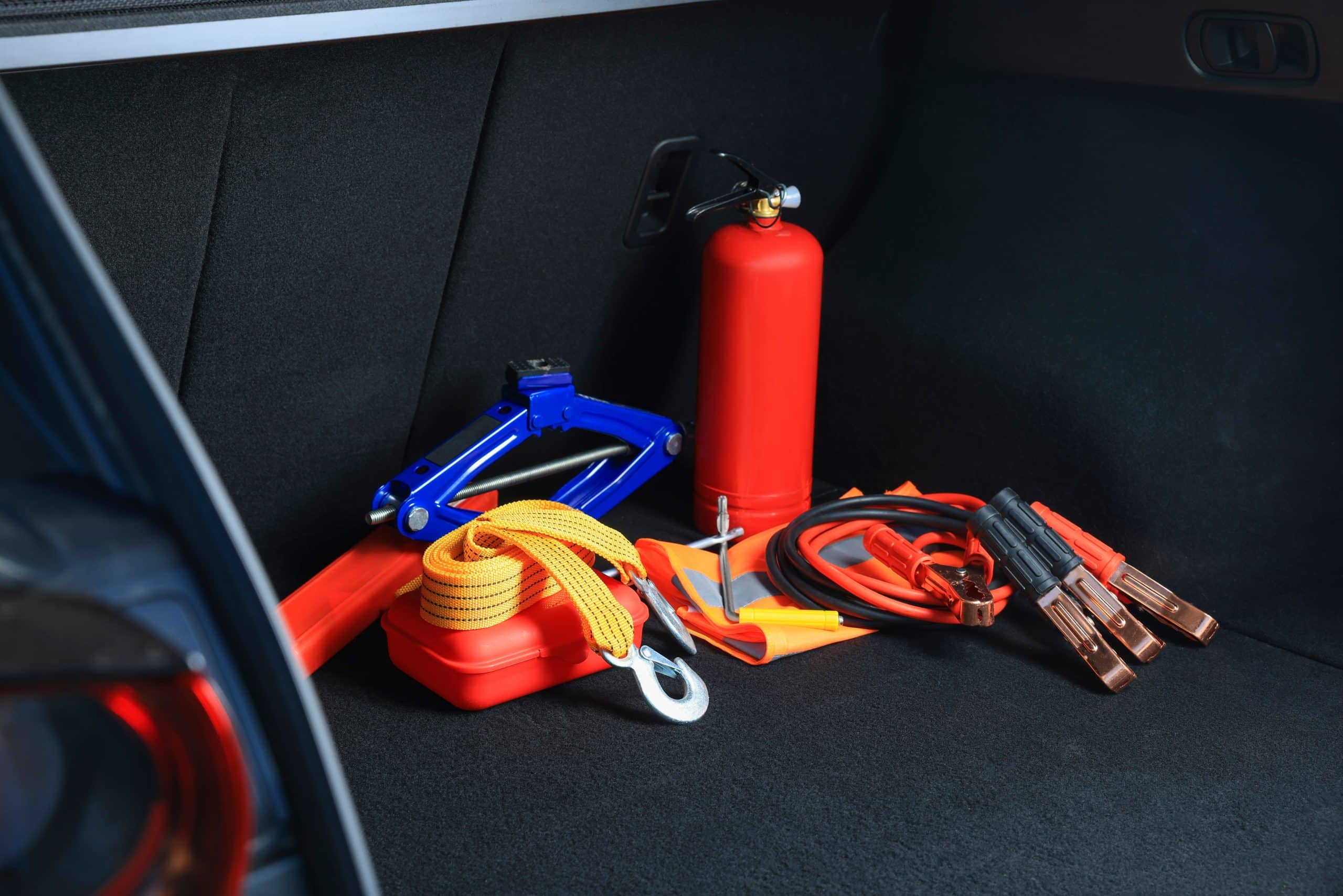
Be sure to pack all required safety items when travelling.
Rules and regulations for specific countries
In Portugal, you will need a roof mount if you are travelling with bikes. Driving with them mounted on the back of the car is illegal. You will also need prepaid toll tickets to be able to drive on motorways.
Pay close attention to speed limits in France, as they are subject to different weather conditions. Also make sure your car spots a Crit’Air emissions sticker, to avoid a fine up to € 135, and always have a breathalyser in your car. Lastly, you can’t hear headphones while you’re driving, nor use speed-camera detection on your phone or navigation system.
Visiting any big cities in Germany? You will need an Umweltplakette emission sticker, which you can order here.
Do not use your horn while driving in Vienna or around hospitals in Austria, as this is prohibited!
Make sure to check the parking rules twice when you’re in Spain. These are very specific in some areas. In some one-way streets, for example, cars must be parked on the side of the road that has houses with odd numbers on odd days, while you are expected to park on the opposite side of the road on even days. It is also compulsory to have a spare wheel and the relevant tools in your vehicle. And never wear flip flops when driving!
Pull over whenever you’re thirsty or hungry in Cyprus, because you will be fined if you’re caught drinking or eating while driving.
You are legally required to carry a fire extinguisher in your vehicle when driving in Poland, Romania, and Russia.
Although some European countries are renowned for their fine wines, the maximum alcohol limit for drivers is a lot lower in Europe than it is in the UK. The general limit is 0.05% or less, like in Sweden and Norway. But if you’re new to driving, it’s generally only 0.02% or less. You can check the alcohol limit per country here.
What are your experiences?
Have you ever driven in Europe? Tell me more about your experiences on European roads, and let me know if you have any tips!





2 Comments
The requirement to carry a breathalyser in France was removed in 2020. However the RAC recommends to carry one as the laws are stricter on alcohol limits. But probably better not to drink and drive at all.
We are currently in France and had an argument with a 20 tonne lorry. When we rang 112 for assistance, as the incident had blocked a busy mountain road, the officer who answered, after confirming no one was injured, said I needed to ring the local police, and I had to ask him for the number. Luckily, as the road was completely blocked in both ways the Municipal police and Gendarmerie turned up and were very helpful. Any French I had disappeared in the middle of this incident. So be ready for questions about location etc.
In France drivers have to carry a Constat Amiable d’Accident Automobile (Accident Report) which is in French and English. The French lorry driver completed as driver A and us as driver B. He put his description on the front together with a drawing of the incident. Driver B does the same on the reverse of the first sheet. Make sure that the information has been copied onto the second sheet, I.e. that you rewrite your description and add the drawing on the back of the second sheet. Make sure both parties sign the document and driver B takes the copy. Take photographs of the front and back of driver A’s copy and driver B’s.
Take loads of photos and if in an accident with a lorry, particularly an articulated one, take a photograph of the front of the cab with the number plate.
Are you aware of the change for Spain in 2026 when warning triangle’s (2) are being replaced by a V16 beacon which has to be connected?